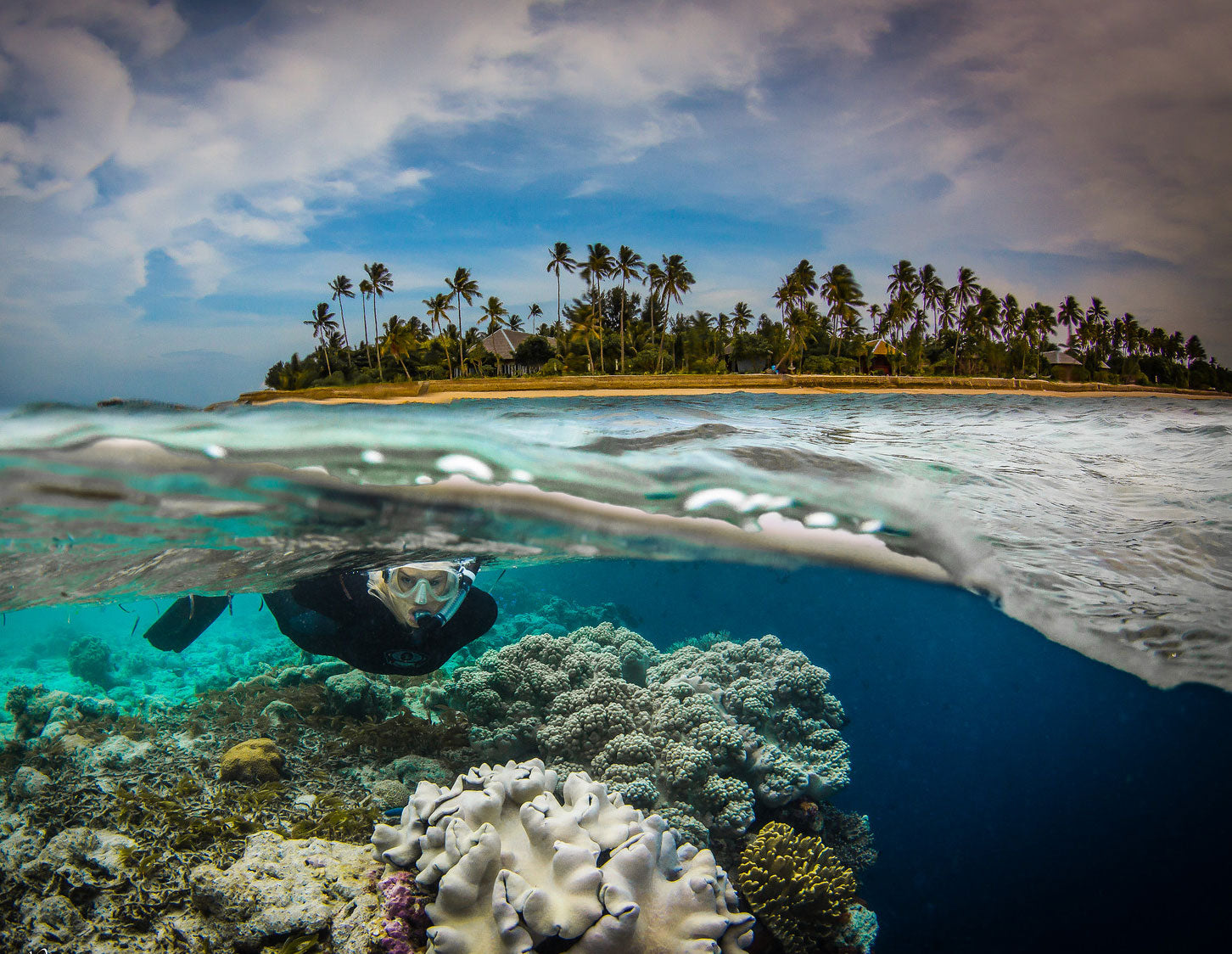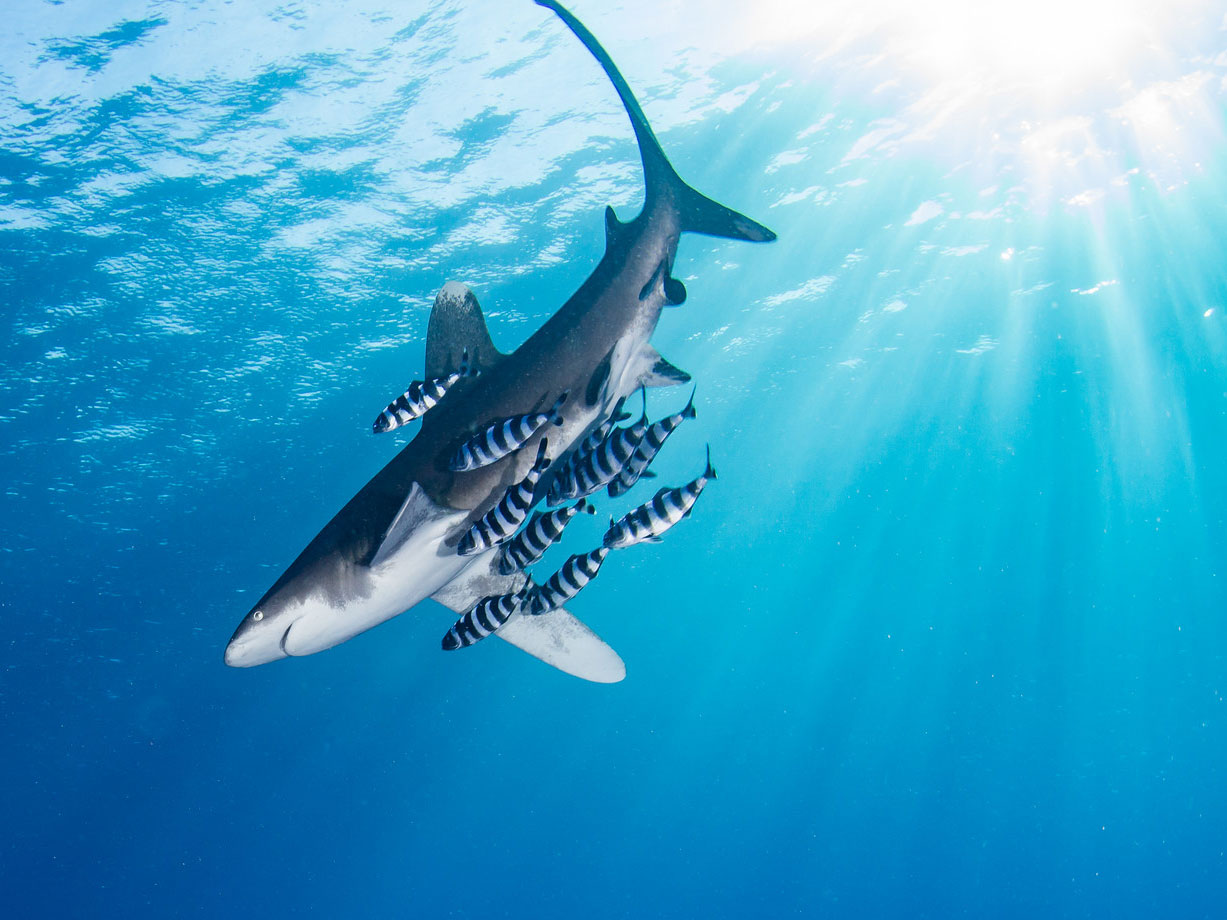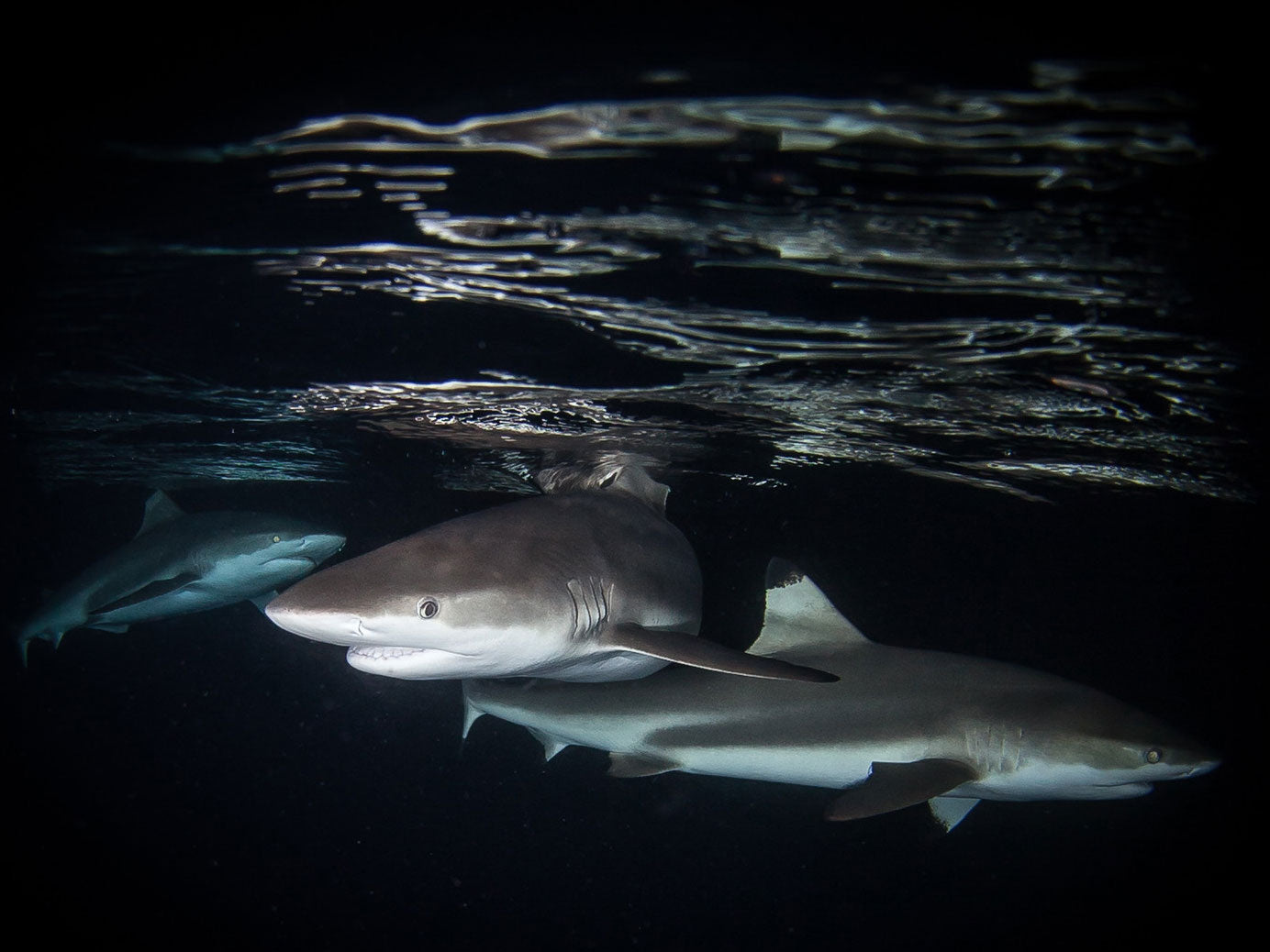Split shots (also called half-in, half-out or over-under) are universally loved for bringing life above and below water together. Think an island of palm trees with fish schooling beneath the surface. Or a swimmer diving in the water to cool off. Split shots offer a cool perspective that can inject that wow factor into an otherwise standard vacation scene.

ISO 640 • f/3.5 • 1/60 • Canon EOS 50D with Tokina 10-17mm Fisheye Lens
Equipment
The water line will be a major element to consider when shooting split shots. The key to getting a smooth, even water line is a large diameter dome. An 8" dome makes the waterline manageable and improves depth of field for better chances of a sharp image on both top and bottom.

A super wide angle or fisheye lens is critical for the angle of coverage you need to fit the whole scene in the frame. Use a lens that's capable of focusing to 12" (0.3m) or closer to have the underwater portion of the frame in focus.

The wider the lens and the bigger the dome, the better for split shots. This is the Canon 8-15mm Fisheye, which is as wide as it gets. It was actually shot on a sunny day, the color temperature of the sky was cooled down with Gradient Filters in Lightroom for a moody effect.
45º viewfinders are awesome for shooting underwater but can make split shots difficult or impossible. A straight viewfinder is recommended unless the water is shallow enough to stand in and sight the shot over the top of the housing.
Exposure
The first big challenge is properly exposing both the top and bottom of the image. It's very difficult to get it perfect, so shoot RAW if possible to allow for corrections in post-production.
Popular strategies for exposing sky and water in the same tonal range are:
- Flash fill the bottom of the frame. Keep your strobes completely submerged in the water, set behind and angled away from the lens.
- Shoot in high sun with white sand bottom to bounce the light from above.
- Position the sun at you back to minimize the range of tones your lens sees.
Once you have worked out the lighting and exposure, the work of split shots will be managing the water line. Watching the front of the dome, either from over or to the side of the housing, can make it easier. Be careful not to get your face or body in the shot when shooting a super wide angle lens. Even in calm conditions, seawater will lap across your dome. Timing of the shutter is critical to coincide with the line being as close to center and level in the middle of the dome as you capture.

ISO 400 • f/14 • 1/160 • Canon EOS 100D Rebel SL1 with Tokina 10-17mm Lens
Where can you go from here?
Changing the "tilt" of the camera in the water has a dramatic effect on the image. Depending on the direction, tilting will show you more of the surface of the water- viewed from above or below. After shooting level for awhile, try upward and even downward angles for effect. Most photo competitions consider Snell's Window - which will begin to form as you tilt the camera - to be in the same category as split shots.

ISO 160 • f/9 • 1/125 • Canon EOS 5D Mark II with Canon 8-15mm Fisheye
Split shots can make really fun digital art composites. Shoot two images of the same scene and stitch them together later in a photo editing program. One photo would be exposed for the upper section, the second exposed for the lower section. This can be an effective solution where the tonal range differential is wider than what you camera can capture in a single frame.

This composite won at UW Photography.com in the Creative/Manipulated category. The sharks are from Yap, the moon is from the photographer's backyard in Ohio, and the sky and stars came from a night shot at Wakatobi in Indonesia.
Additional Reading
Split Shots (Half-In, Half-Out) Cheat Sheet
Full Moon Compositing (with free high-resolution moon download)













